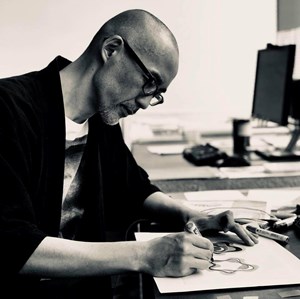
"The magnificence of aesthetics seems related to the anonymity of the design. Our office is located in Rotterdam by the harbor. I hardly see the fingerprints of personal design intentions in my view; instead I see beautiful harbor landscapes. My intention in design is to create something that appears as if it already existed there before our personal design intervention."
Image: Hiroki Matsuura, CEO of MADMA urbanism+landscape and Founding Partner at MASA Architects, copyright MADMA
Hiroki Matsuura was born, raised and educated in Japan. Professionally he matured in the Netherlands as an aesthetic engineer, and Matsuura now works mixing Eastern Zen and Dutch Pragmatism into innovative designs.
In the summer of 2018, Matsuura established MADMA urbanism+landscape. MADMA is a spin-off company of the international department of MAXWAN, prodominentally run by Matsuura where he has operated as a partner/design princial since 2004.
Since 2015, Matsuura together with Rene Sangers established MASA architects.
MASA focuses on architecture, interior and product design.
Matsuura headed the international business development of MAXWAN and lectures regularly throughout the world. He is the design principal of the Skolkovo Gardens, a 50ha park design in Skolkovo, Moscow. And he is currently a member of the Urban Council at the Skolkovo Foundation.
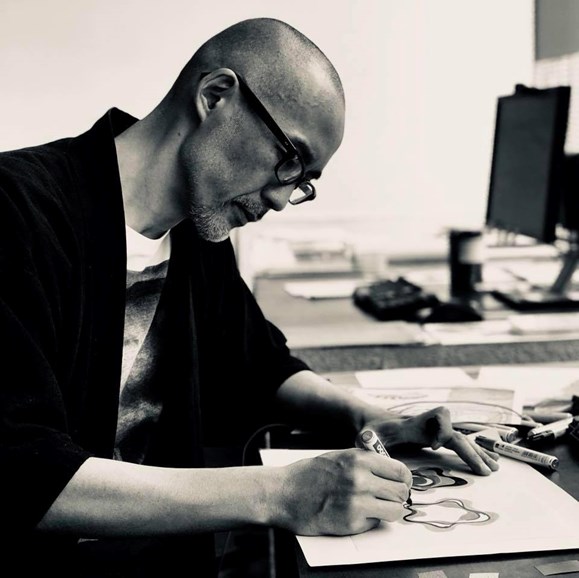
Hiroki Matsuura, CEO of MADMA urbanism+landscape and Founding Partner at MASA Architects, copyright MADMA
Matsuura teaches and lectures at the Academy of Architecture Amsterdam, the Rotterdam Academy of Architecture and Urban Design, TU Delft, and is a guest professor at MARCH (The Moscow School of Architecture).
ArtDependence (AD): Hiroki, could you explain your idea of “design without design” and how you implement it?
Hiroki Matsuura (HM): The concept relates to questions like: ”What is the definition of the design?” or “What makes us notice beauty?” From my perception, the most exquisite beauty is created strictly by objective factors, purposes or conditions rather than subjective factors such as the designer’s personal inspiration or intuition. I would refer to such beauty as found in any creature of nature, the shape of a submarine or a superbly designed medical device. These are not designed by someone to look good, but can result in being beautiful as a function of how we perceive them. To achieve this type of beauty, I keep myself careful to not be overdriven by “how it looks”, and rather prioritise “what it does”.
AD: What experience led you to your dream of “designing something that looks like it’s not designed by anyone”?
HM: This question directly relates to the first answer just above. The magnificence of aesthetics seems related to the anonymity of the design. Our office is located in Rotterdam by the harbor. I hardly see the fingerprints of personal design intentions in my view; instead I see beautiful harbor landscapes. My intention in design is to create something that appears as if it already existed there before our personal design intervention.
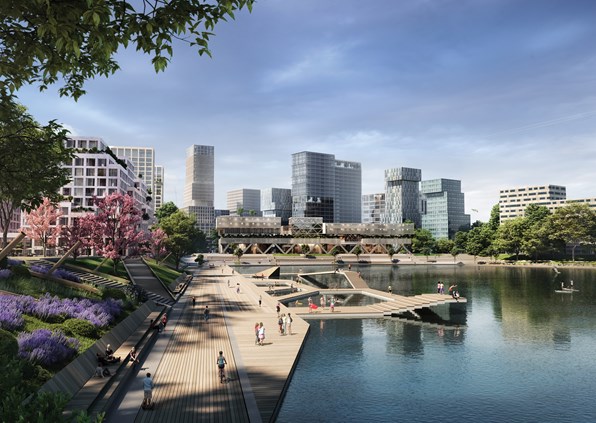
CCC+ ©MADMA urbanism+landscape
AD: Are there certain projects that you are particularly proud of? What is unique about them?
HM: In relation to art, I am very proud of two art-exhibition designs that we completed for the Museum Boijmans Van Beuningen in Rotterdam, “Babel” and "Mad About Surrealism".
Our general approach to the design of an art exhibition is questioning how to enhance the power of the exhibition’s art content. To achieve that goal, we must always search for a way to make our design presence subtle yet fundamental.
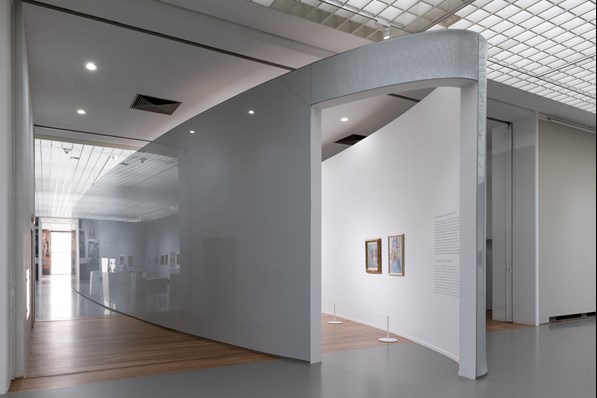
MAD ABOUT SURREALISM ©Lotte Stekelenburg, ©MASA architects
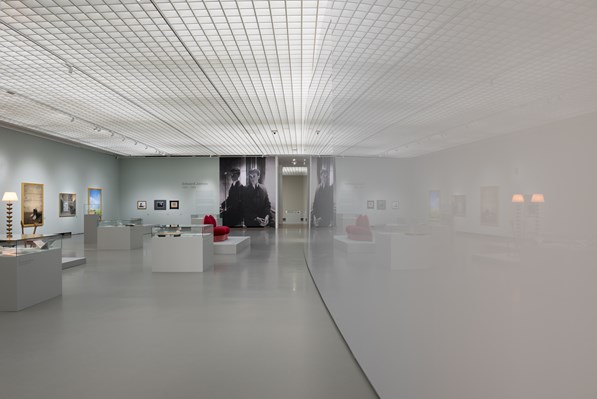
MAD ABOUT SURREALISM ©Lotte Stekelenburg, ©MASA architects
AD: Tell us about your cooperation for the “Mad About Surrealism” exhibition space. What was your initial approach to its design? How did you deal architecturally with communication values of this exhibition space? And can you give us an example of a problem you were facing with this project?
HM: This exhibition requires the subdivision of a single large space of the museum into 5 separated rooms. Despite the beauty of a vast space, the project relies heavily on the concept of a single space being divided. Instead of building up numerous walls as dividers, we followed an idea to create only one giant cigar-shaped object, right in the middle of the space, which softly divided the room into 4 segments with the object itself becoming the 5th segment. The giant object was clad with light-grey reflective-foil that obscurely reflects surrounding artworks. So, the space was successfully coordinated by the placement of one simple object.
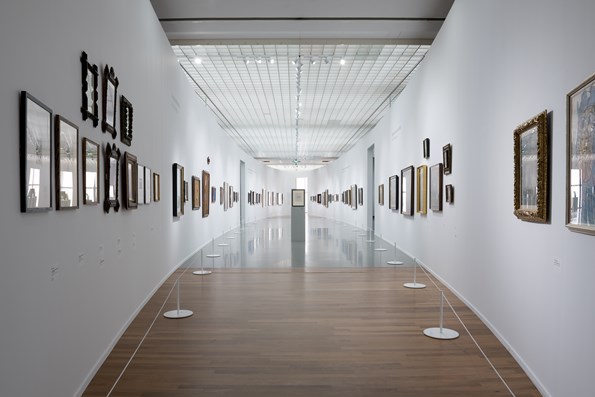
MAD ABOUT SURREALISM ©Lotte Stekelenburg, ©MASA architects
Museum Boijmans van Beuningen Rotterdam, in collaboration with the National Gallery of Modern Art in Edinburgh and the Hamburger Kunsthalle, presented ‘Mad About Surrealism’ with over 300 surrealistic works from Dalí, Ernst, Magritte, Miró and others. Most of the works have rarely ever been exhibited and some of them might never be on display again.
The key ingredient in the design was a newly built central room with a zeppelin-like shape. The bright interior of the zeppelin hosted eight themes – Dali’s paranoia, Fabulous women etc. - composed of works from all four collections. By its size and its position the zeppelin divided the Bodon Hall into four quadrants - one for each collector. The skin of the zeppelin was a highly reflective gray that surrealistically reflects light, artworks and visitors of the collection rooms.
AD: What is the biggest challenge in working with large-scale urban landscapes?
HM: Despite the constant changes in our trends, preferences and feelings, large-scale urban landscapes are meant to remain for substantially long periods of the time. What we aim to do for such projects is to create something strong and tolerant against these fluid factors. We should be very careful not to be shortsighted when dealing with such projects.
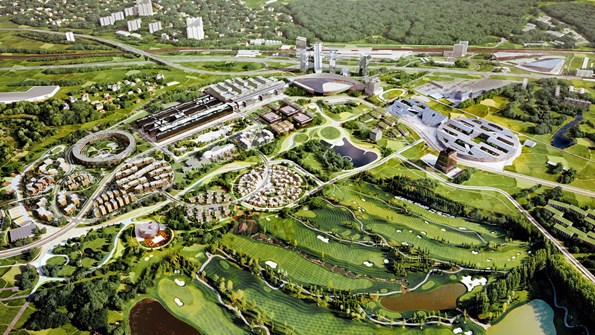
SKOLKOVO CENTRAL PARK ©Skolkovo
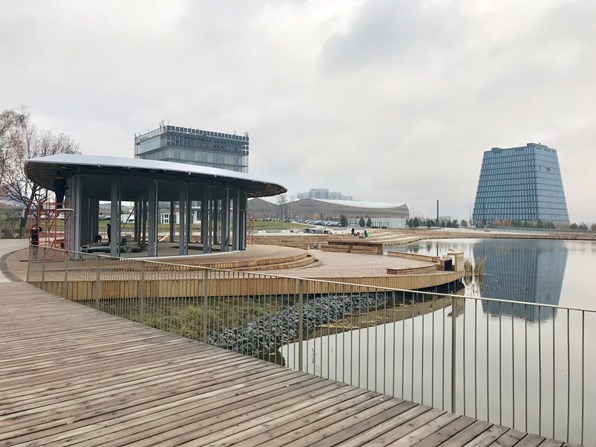
SKOLKOVO CENTRAL PARK ©MADMA urbanism+landscape
AD: How do you see the primary role of an architect in today’s society? What values does one carry in it?
HM: I must admit the role of the architect, especially for the public good, is becoming increasingly limited in our current society, not only due to the highly economically-driven backdrop of our profession but also due to overly subdivided processes and responsibilities within the industry. We are kind of driving a vehicle that has too many gauges, parameters, and too many drivers in the driving seat. However, the ultimate goal for the role of the architect has always remained the same. The architect is meant to make the spaces that society employs better, no matter how naïve it may sound.
AD: Are you concerned about environmental harmony and ecological architecture in your urban projects?
HM: Of course! What we need to avoid at least, is that we are not making our environment worse by any means of creating artifacts. This idea is not limited to ecological and environmental issues, but is also a large concern in considering the qualitative and aesthetic factors of a project.
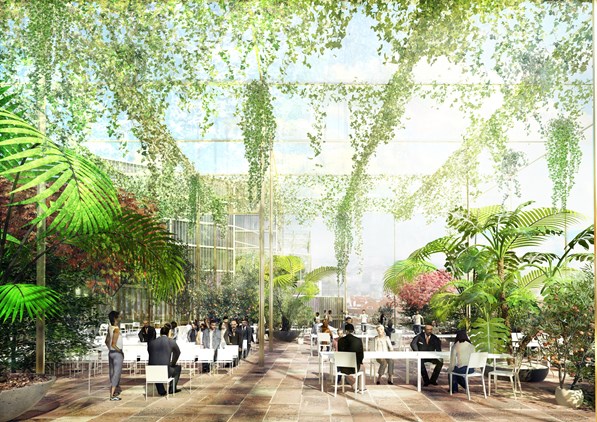
RED HILL RISE ©MASA architects, ©PosadMaxwan
AD: What are the best ways cities can care for their people through urban architecture?
HM: Among all sorts of impacts that urban architecture drops on a city, what matters most is where the building touches down to the ground. The ground floor of any kind of building in the urban setting should be treated as a public domain, even if it is private property. It must contribute to improving the city environment. We should start with this simple task in mind first.

ArtDependence Magazine is an international magazine covering all spheres of contemporary art, as well as modern and classical art.
ArtDependence features the latest art news, highlighting interviews with today’s most influential artists, galleries, curators, collectors, fair directors and individuals at the axis of the arts.
The magazine also covers series of articles and reviews on critical art events, new publications and other foremost happenings in the art world.
If you would like to submit events or editorial content to ArtDependence Magazine, please feel free to reach the magazine via the contact page.